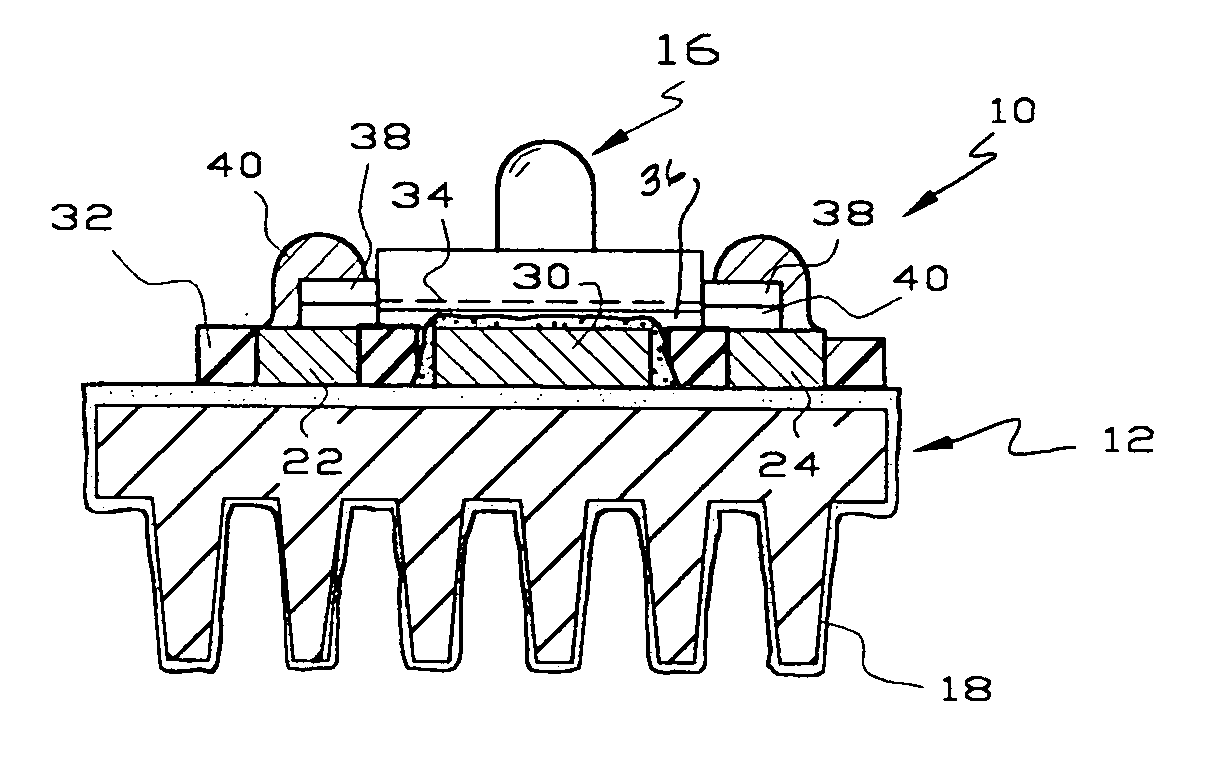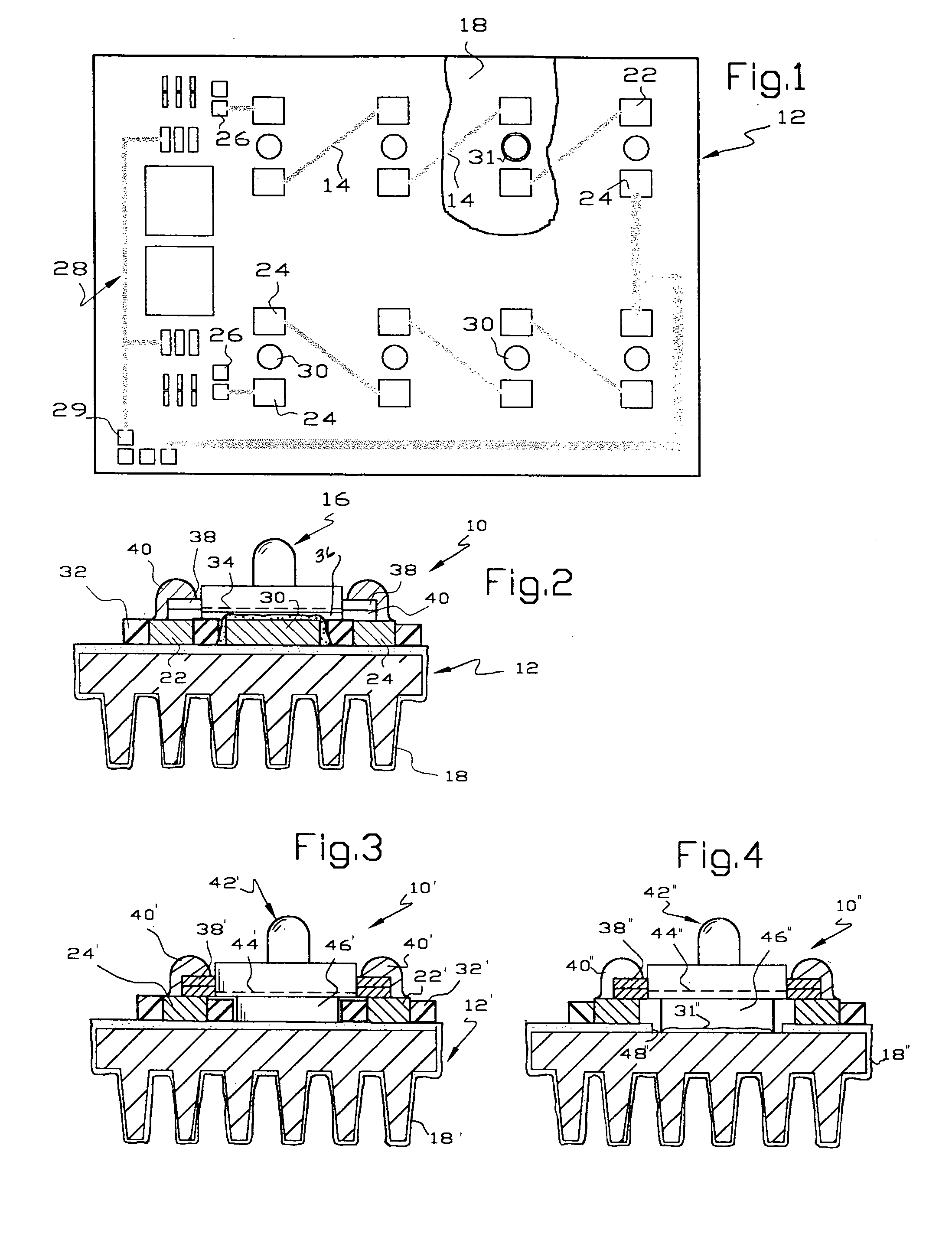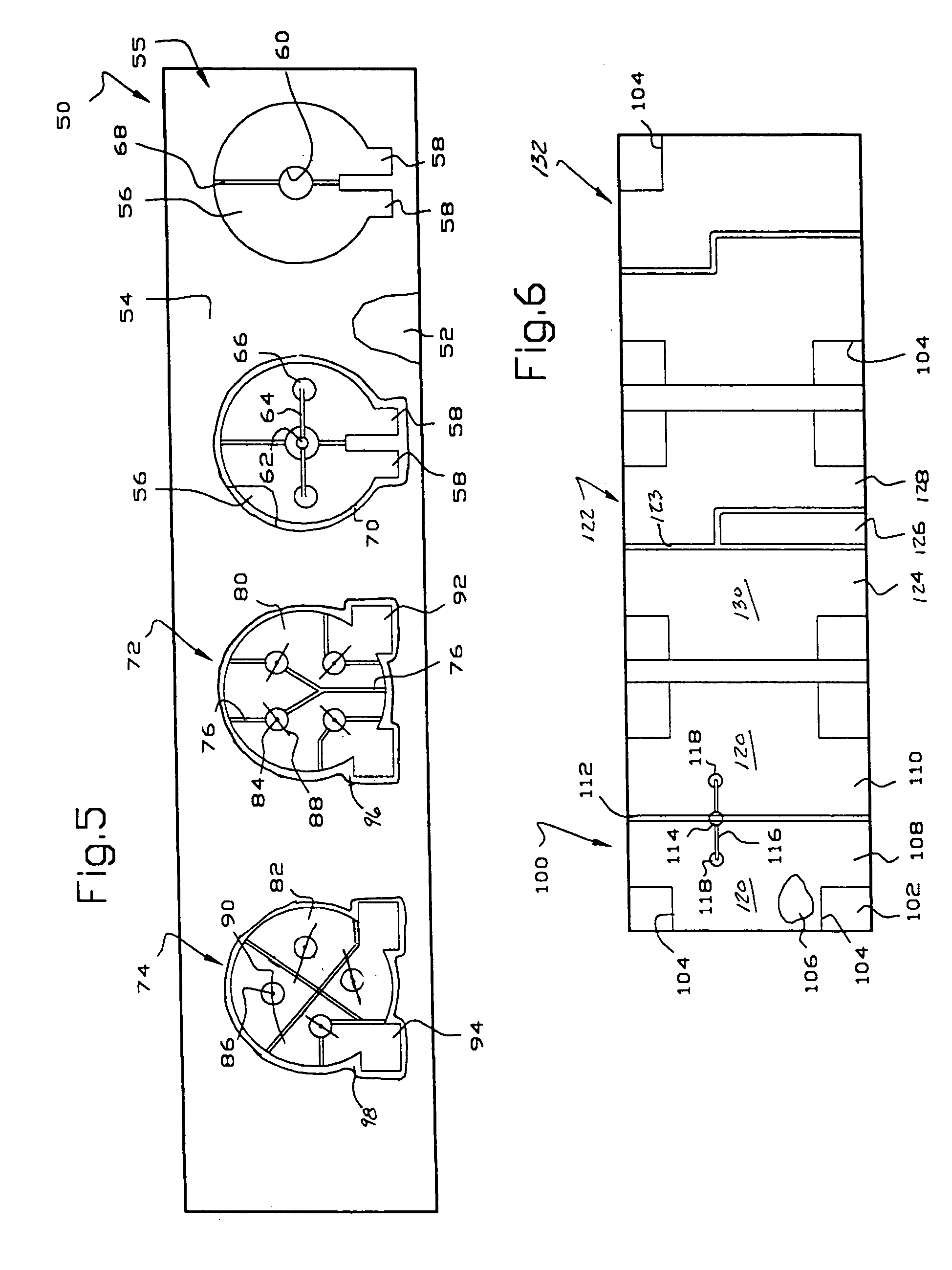Light emitting assembly with heat dissipating support
a technology of light emitting assembly and support, which is applied in the direction of discharge tube/lamp details, non-printed electric components association of printed circuits, non-metallic protective coating applications, etc., can solve the problem of high cost of thin film techniques, and achieve the effect of low cost, high heat dissipation capacity, and structural strength
- Summary
- Abstract
- Description
- Claims
- Application Information
AI Technical Summary
Benefits of technology
Problems solved by technology
Method used
Image
Examples
Embodiment Construction
[0023]Referring to FIGS. 1–2, there is illustrated a light emitting assembly 10 of this invention comprising, as major components, a metal substrate or heat sink 12, a series of circuit traces 14 on the substrate and a series of light emitting elements or LED's 16. The assembly 10 may be used to provide a light source for a variety of applications, such as a vehicle headlight, taillight, brake light, or non-vehicle light source in which a series of LED's are used to deliver light.
[0024]The substrate or heat sink 12 may be of any suitable metal that has appropriate heat dissipating characteristics, strength, cost and the ability to receive a thin electrically insulating layer or coating 18. Preferred metals include aluminum, aluminum alloys, magnesium, magnesium alloys, zinc, pot metal and the like. The electrically insulating coating 18 is formed with a thickness of ten microns to one thousand microns, preferably on the order of about fifty to one hundred microns. The electrically i...
PUM
 Login to View More
Login to View More Abstract
Description
Claims
Application Information
 Login to View More
Login to View More - R&D
- Intellectual Property
- Life Sciences
- Materials
- Tech Scout
- Unparalleled Data Quality
- Higher Quality Content
- 60% Fewer Hallucinations
Browse by: Latest US Patents, China's latest patents, Technical Efficacy Thesaurus, Application Domain, Technology Topic, Popular Technical Reports.
© 2025 PatSnap. All rights reserved.Legal|Privacy policy|Modern Slavery Act Transparency Statement|Sitemap|About US| Contact US: help@patsnap.com



